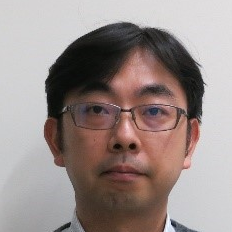Microwave Heating and Chemistry
A special issue of Processes (ISSN 2227-9717). This special issue belongs to the section "Chemical Processes and Systems".
Deadline for manuscript submissions: closed (15 December 2019) | Viewed by 23976
Special Issue Editors
Interests: biomass conversion; green chemistry; hydrothermal chemistry; microwave chemistry
Interests: microwave heating; wireless power transfer; microwave engineering
Special Issue Information
Dear Colleagues,
Under the Paris Agreement, reductions of carbon dioxide emission are strongly required in various industrial processes. Renewable-energy-based electrification of chemical processes is one of the important goals. Unlike the conventional heating method using heat transfer, microwave heating enables material-selective and rapid heating and is expected as a key technology to achieve electrified and energy-efficient industrial processes. For example, microwaves have already been put to practical use in industrial processes such as food processing, rubber vulcanization, drying, and extraction. By making use of its unique heating mode, microwaves can be also applied to broader range of chemical processes including material processing, fine-chemical syntheses (electronic materials and pharmaceuticals) and bulk chemical production in the near future.
This Special Issue on “Microwave Heating and Chemistry” aims to curate novel advances in the development and application of microwave heating to various chemical processes. Topics include, but are not limited to:
- Aplications of microwaves to organic and inorganic chemical reactions, material processing, plasma procressing, food processing, waste treatments, biomass conversion, etc.
- Design and engineering of microwave-assisted chemical processes including computational modeling.
- Development of new microwave devices and applicators for chemical processes (e.g. semiconductor generator, phase-controlled, modulated and pulsed microwaves).
- Evaluation of process and energy efficiency of microwave-assisted chemical processes.
Dr. Tsubaki Shuntaro
Prof. Tomohiko Mitani
Dr. Jun Fukushima
Guest Editors
Manuscript Submission Information
Manuscripts should be submitted online at www.mdpi.com by registering and logging in to this website. Once you are registered, click here to go to the submission form. Manuscripts can be submitted until the deadline. All submissions that pass pre-check are peer-reviewed. Accepted papers will be published continuously in the journal (as soon as accepted) and will be listed together on the special issue website. Research articles, review articles as well as short communications are invited. For planned papers, a title and short abstract (about 250 words) can be sent to the Editorial Office for assessment.
Submitted manuscripts should not have been published previously, nor be under consideration for publication elsewhere (except conference proceedings papers). All manuscripts are thoroughly refereed through a single-blind peer-review process. A guide for authors and other relevant information for submission of manuscripts is available on the Instructions for Authors page. Processes is an international peer-reviewed open access semimonthly journal published by MDPI.
Please visit the Instructions for Authors page before submitting a manuscript. The Article Processing Charge (APC) for publication in this open access journal is 2400 CHF (Swiss Francs). Submitted papers should be well formatted and use good English. Authors may use MDPI's English editing service prior to publication or during author revisions.
Keywords
- microwave-assisted chemical reaction
- microwave chemistry
- intelligent microwave heating
- industrial microwave process
Benefits of Publishing in a Special Issue
- Ease of navigation: Grouping papers by topic helps scholars navigate broad scope journals more efficiently.
- Greater discoverability: Special Issues support the reach and impact of scientific research. Articles in Special Issues are more discoverable and cited more frequently.
- Expansion of research network: Special Issues facilitate connections among authors, fostering scientific collaborations.
- External promotion: Articles in Special Issues are often promoted through the journal's social media, increasing their visibility.
- Reprint: MDPI Books provides the opportunity to republish successful Special Issues in book format, both online and in print.
Further information on MDPI's Special Issue policies can be found here.







